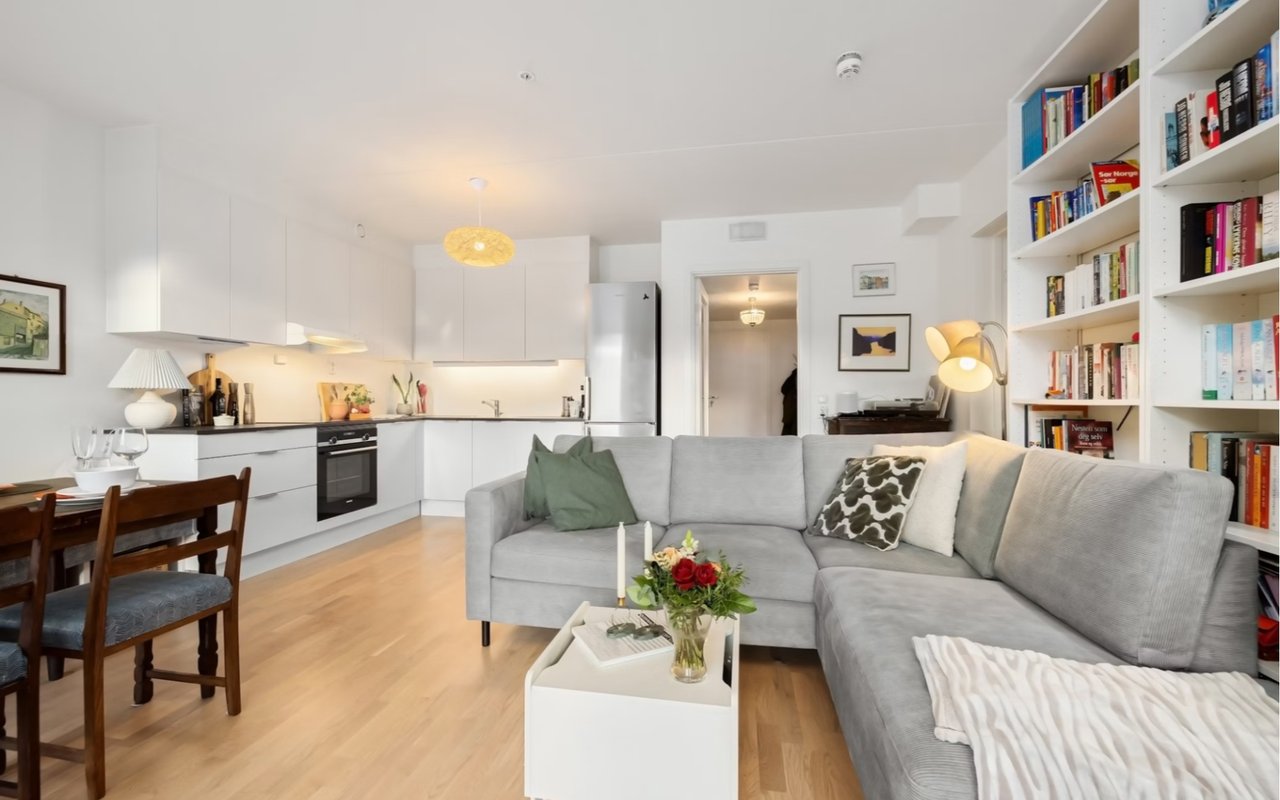Minneapolis features a range of home styles, from Victorian row houses to contemporary condos. Understanding your property’s unique footprint helps ensure that your furnishings feel cohesive and refined. With this guide, you will discover how to maximize the use of space, select intriguing pieces, and create inviting vignettes suited to Minneapolis living. By the end, you will feel ready to curate a space that feels personal, practical, and perfectly suited to Minneapolis’ weather and spirit.
Understanding Your Home Layout
Start by mapping out each room’s dimensions and traffic flow to identify key zones like living, dining, and reading nooks. This strategic approach helps you choose appropriately sized furniture that prevents overcrowding while maintaining open pathways for everyday routines. Whether working with tall ceilings in a historic home or a cozy floor plan in a modern townhome, having clarity on scale ensures that your selections fit seamlessly.
Take measurements of doorways, windows, and hallways before shopping to avoid surprises when your sofa or cabinet arrives. Use painter’s tape on the floor to visualize how large pieces will sit within your space and to test multiple layouts without moving heavy items around. This simple planning step saves time, money, and hassle — and it allows you to experiment with different orientations before committing to a final arrangement.
Take measurements of doorways, windows, and hallways before shopping to avoid surprises when your sofa or cabinet arrives. Use painter’s tape on the floor to visualize how large pieces will sit within your space and to test multiple layouts without moving heavy items around. This simple planning step saves time, money, and hassle — and it allows you to experiment with different orientations before committing to a final arrangement.
Selecting Furniture That Balances Form and Function
Focus on versatile furniture that adapts to your lifestyle needs, such as a sleeper sofa for visiting friends or an extendable dining table that hosts dinner gatherings with ease. Look for well-built frames crafted from hardwood or powder‑coated metal to withstand Minneapolis’ temperature extremes and maintain structural integrity over years of use. Pieces featuring concealed storage, such as ottomans with removable lids or sideboards with interior shelving, help you store extra blankets, winter gear, and holiday decor when it’s not in use.
Prioritize comfort by testing seat depth and cushion firmness in person whenever possible so that you can gauge support levels matched to your daily routines. Adding modular seating arrangements lets you reconfigure sections for movie nights, reading corners, or impromptu gatherings without crowding up your living area. This blend of form and function ensures you can invest in pieces that look polished, feel comfortable, and work hard in every season.
Prioritize comfort by testing seat depth and cushion firmness in person whenever possible so that you can gauge support levels matched to your daily routines. Adding modular seating arrangements lets you reconfigure sections for movie nights, reading corners, or impromptu gatherings without crowding up your living area. This blend of form and function ensures you can invest in pieces that look polished, feel comfortable, and work hard in every season.
Layering Textures for Visual Interest
Combine materials like handwoven wool, breathable linen, and supple leather to introduce warmth and contrast into your living areas while ensuring that each piece remains low‑maintenance. Drape a chunky knit throw over a sleek sofa and pair a leather accent chair with a plush area rug to create a balanced tactile experience in every seating niche. These carefully layered textures make each zone feel inviting and help you transition smoothly from winter’s crisp air to summer’s higher humidity under your roof.
Mix in metallic accents, such as brass picture frames or brushed nickel table lamps, to add reflective highlights without overpowering softer textiles. In the dining room, contrast a smooth oak tabletop with woven placemats and linen napkins for an elevated everyday setting. By thoughtfully combining these finishes, you can maintain visual cohesion and prevent any single texture from dominating your overall design scheme.
Mix in metallic accents, such as brass picture frames or brushed nickel table lamps, to add reflective highlights without overpowering softer textiles. In the dining room, contrast a smooth oak tabletop with woven placemats and linen napkins for an elevated everyday setting. By thoughtfully combining these finishes, you can maintain visual cohesion and prevent any single texture from dominating your overall design scheme.
Crafting a Cohesive Color Palette Inspired by the Twin Cities
Look to Minneapolis’ seasonal landscapes for color inspiration — think muted slate blues, warm sandstone tans, and deep forest greens to anchor your palette. Subtle nods to the Mississippi River’s silvery hues in accent pillows, decorative vases, or wall art bring a serene quality to living rooms, dens, and bedrooms alike. Balancing neutral base layers with bolder accent walls helps you introduce pops of color without overwhelming smaller living spaces.
Test multiple paint swatches during different times of day — from the soft morning glow to the bright afternoon sun — to see how the sunlight affects your chosen tones before committing to a full wall of paint. In open‑concept areas, use consistent trim, baseboard, and door colors to create an effortless flow between connected rooms and anchor transitional zones. This unified approach lets you introduce accent rugs, artwork, or upholstery in complementary hues that enhance cohesion and invite visual harmony.
Test multiple paint swatches during different times of day — from the soft morning glow to the bright afternoon sun — to see how the sunlight affects your chosen tones before committing to a full wall of paint. In open‑concept areas, use consistent trim, baseboard, and door colors to create an effortless flow between connected rooms and anchor transitional zones. This unified approach lets you introduce accent rugs, artwork, or upholstery in complementary hues that enhance cohesion and invite visual harmony.
Designing Inviting Gathering Spaces
Arrange seating in conversational clusters oriented around focal points like a cozy fireplace, a media console, or a panoramic window overlooking the Minneapolis skyline. Anchor these setups with oversized area rugs that extend at least six inches beyond each furniture piece and define clear pathways for easy movement, even during busy gatherings. Blend seating heights and styles — pairing low‑profile chairs with upholstered benches — and add side tables with adjustable lighting so that guests can relax comfortably and keep necessities within reach.
In dining areas, choose a sturdy table that complements your seating layout and fits your typical guest count with enough room to spare for holiday feasts or midweek meals. Stools at a kitchen island should allow you to pull in with enough legroom while maintaining a clear line of sight to the chef at work. Adding a buffet or bar cart on nearby walls creates serving stations that keep the countertops clear and encourage guests to mingle around dedicated refreshment zones.
In dining areas, choose a sturdy table that complements your seating layout and fits your typical guest count with enough room to spare for holiday feasts or midweek meals. Stools at a kitchen island should allow you to pull in with enough legroom while maintaining a clear line of sight to the chef at work. Adding a buffet or bar cart on nearby walls creates serving stations that keep the countertops clear and encourage guests to mingle around dedicated refreshment zones.
Adapting Decor for the Seasons
Rotate textiles and accents seasonally to keep your home feeling fresh — swap lightweight linen curtains for insulated drapes as the temperatures drop, and trade out throw pillows for knitted varieties in autumn. Summer months call for breezy cotton throws, natural fiber rugs, and decorative greenery to evoke outdoor vibes even when you stay indoors. This simple strategy ensures that your decor always aligns with outdoor conditions and personal comfort preferences without requiring a total makeover each season.
Store out‑of‑season pieces in labeled bins with protective covers to prevent damage and make future swaps effortless. Use under‑bed storage or closet organizers to keep bulky winter accessories like faux‑fur throws and wool blankets neatly out of sight. When spring arrives, bring in vibrant accent pieces — think fresh ceramics, floral motifs, and decorative pillows in pastel shades — to signal the change in weather.
Store out‑of‑season pieces in labeled bins with protective covers to prevent damage and make future swaps effortless. Use under‑bed storage or closet organizers to keep bulky winter accessories like faux‑fur throws and wool blankets neatly out of sight. When spring arrives, bring in vibrant accent pieces — think fresh ceramics, floral motifs, and decorative pillows in pastel shades — to signal the change in weather.
With this guide, you have the tools to tackle layout changes, curate cohesive color palettes, and layer textures that invite everyday comfort. Embrace the journey of creating a home that reflects how you live and celebrates the unique character of Minneapolis. Your decor choices — whether a bold accent wall or a sculptural lamp — will make your interiors as dynamic as the city around you. Now, it’s time to gather your favorite pieces, experiment with layouts, and enjoy the process of making your space feel unmistakably yours.
Reach out to BJ LaVelle with Roost Real Estate when you’re ready to achieve your real estate goals in Minneapolis.
Reach out to BJ LaVelle with Roost Real Estate when you’re ready to achieve your real estate goals in Minneapolis.



